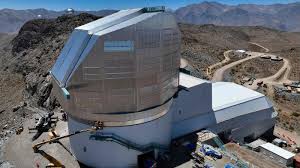Chile’s astronomers set to revolutionise galactic studies with world’s largest digital camera

In the expansive desert mountains of northern Chile, astronomers at the Vera C. Rubin Observatory are preparing to unveil a groundbreaking chapter in cosmic exploration.
Their ambitious $800 million project involves attaching the world’s largest digital camera, equivalent in size to a small car and weighing 2.8 metric tons, to a telescope. This colossal instrument, set to capture its first images in early 2025, is poised to transform the understanding of the universe.
The Vera C. Rubin Observatory, situated 2,500 meters above sea level on the Cerro Pachon mountain, is part of a US-funded initiative run by the NOIRLab research center. Stuartt Corder, the deputy director of NOIRLab, predicts that this endeavor will bring about “a paradigm shift in astronomy.”
Chile, already a powerhouse in astronomical observation with a third of the world’s most potent telescopes, is solidifying its position with this venture. The country’s pristine skies, nestled between the Pacific Ocean and the Andes mountain range, provide an ideal environment for astronomical research.
The monumental camera’s primary mission is the Legacy Survey of Space and Time (LSST), a comprehensive 10-year review of the sky. Expected to reveal insights into 20 million galaxies, 17 billion stars, and six million space objects, LSST aims to produce an updated inventory of the solar system and deepen our understanding of the Milky Way, energy, and dark matter.
Boasting an astounding 3,200-megapixel capacity, the Rubin Observatory camera will dwarf existing technology, requiring over 300 high-definition televisions to display just one of its colossal images. Built in California, the camera triples the capacity of the current most powerful camera, the 870-megapixel Hyper Suprime-Cam in Japan.
Chile’s evolution as an astronomical hub is highlighted by the history of telescopes, from the 40-centimeter Cerro Tololo telescope transported by mule in the 1960s to the impending state-of-the-art Rubin Observatory. This facility, named in honor of the US astronomer Vera C. Rubin, who discovered dark matter, adds to the array of space observation centers in the region.
As Chile continues to attract astronomers and researchers globally, its astronomical legacy remains unparalleled, with critical contributions such as the 2011 Nobel Prize-winning revelation of cosmic acceleration at the Cerro Tololo observatory. Bruno Dias, president of the Chilean Society of Astronomy (Sochias), confidently asserts, “Chile is unbeatable” in the realm of astronomy.












